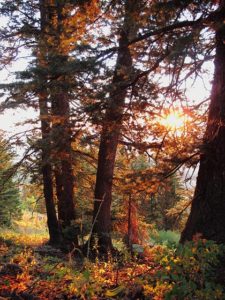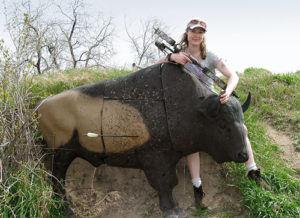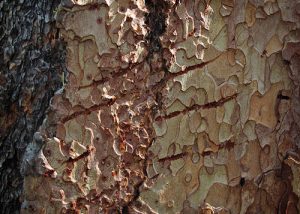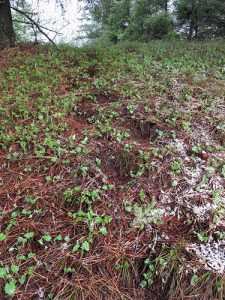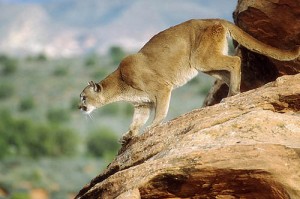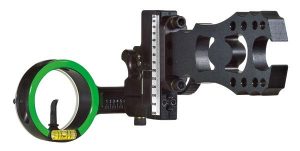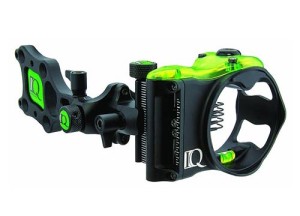
Sick in the Woods
Hunt Journal Entry: September 11, 2016
I just spent the last few days prowling around Idaho and still haven’t seen any decent bucks. Days are ruthlessly hot and dry; nights are freezing, which is probably why I languish with a painful head cold. My first step out of the dusty camp and my legs are sore with disease; my joints hurt, my muscles ache, my head throbs.
Foreign lands and no deer sign yet, but this remote valley looks promising. I’m headed toward the dark, north-face timber where I may get some reprieve from the glaring sun. But the route is thick with oak brush and cedar. Endless branches grasp at my body, tripping me and shoving me back down the steep slope.
I stop frequently to mop pouring sweat from my forehead with my camo cap. I’m still wearing the same stinky outfit I’ve donned for three days. Wind is my best ally or my worst enemy. There’s no point trying to be quiet. I just need a vantage to glass from. I don’t know where I’m going or where I’ll end up; just following my nose and reading sign.
Moments ago something crawled across my neck. I swiped at it and monstrous orange spider fell to the ground. But I won’t be dissuaded. This is what I live for; it’s all I know. Only a year ago my arrow sailed over the biggest velvet buck I ever shot at. He’s long since vanished now, which is why I’m here in Idaho. Redemption. New woods and new hope. I push onward.
Long out of tissue, both nostrils drain continuously, leaving a slimy trail of moisture everywhere I go, likely the only moisture this parched forest has seen in months.
Finally some tracks, but small. I follow to see where they lead. Maybe I’ll strap on my release; I hope I brought it. Just yesterday I was hiking in grizzly country and halfway up the mountain I realized I’d forgotten to load my arrows into my quiver. Stupid, stuffy head!
My life has been various attempts at various activities, but bowhunting has been my one true passion, and better yet, the only thing I’m really good at. But here and now, it’s hard to tell. My brain is gripped with pressure, my body is weak. I push on because I know nothing else.
In the pines a squirrel fires up, barking relentlessly, giving away my position. I always carry a squirrel arrow, but it’s mostly futile; there’s always another squirrel, and the biggest bucks are always in the dark timber with them. During a heavy wind last year, I stumbled upon a giant 4×4 buck bedded in a patch of thick blowdowns. Before I could pull an arrow, a squirrel fired up alerting the buck who quickly rose from his bed and melted away into the forest.
I try to imagine heavy horns moving through the brush, and then my arrow carrying cold steel through its chest cavity. The only way I win is if I wreak maximum carnage on an innocent, unsuspecting deer. I wince at the thought. Will I ever turn away from this bloody pursuit? Likely not, because life outside the woods has little appeal to me, and even less venison. A predator must eat.
At this time I’d like to formally apologize to my faithful and finely crafted compound bow which I’m currently dragging through an almost indescribable tangled hell. Only five years old and it’s already covered in battle scars; scratches, dents and dings. Sure it’s seen some fine moments, but this year it’s just a hiking companion. Its one moment of glory was a dirty coyote I sniped near camp in Utah.
After weed-whacking for two hours I’ve arrived at a fantastic rock outcropping with views of the entire valley. Only an 90 minutes of shooting light left and still no deer. I glass empty draw after empty draw, stacked in vertical rows below the summit.
I want to underestimate the mighty buck; I try to convince myself that he’s just another dumb animal eating and sleeping his life away. But I know better. He’s an ingenious survivor, evading predators year after year with very little effort and hardly a conscious thought. How is that possible? A hunter, no matter his experience, goes to his grave having merely scratching the surface of everything there is to know about these amazing survivors. Outsmarting him is the greatest challenge, and I suppose this relentless pursuit is why it never gets old.
The rest of my Idaho excursion iss nothing short of a grim letdown. The once promised land is mostly bleak, ravaged by human intrusions, just like Utah. ATVs and trash litter the landscape and the woods are devoid of huntable game. Big bucks live short lives hidden away in dark holes far removed from human reach.

